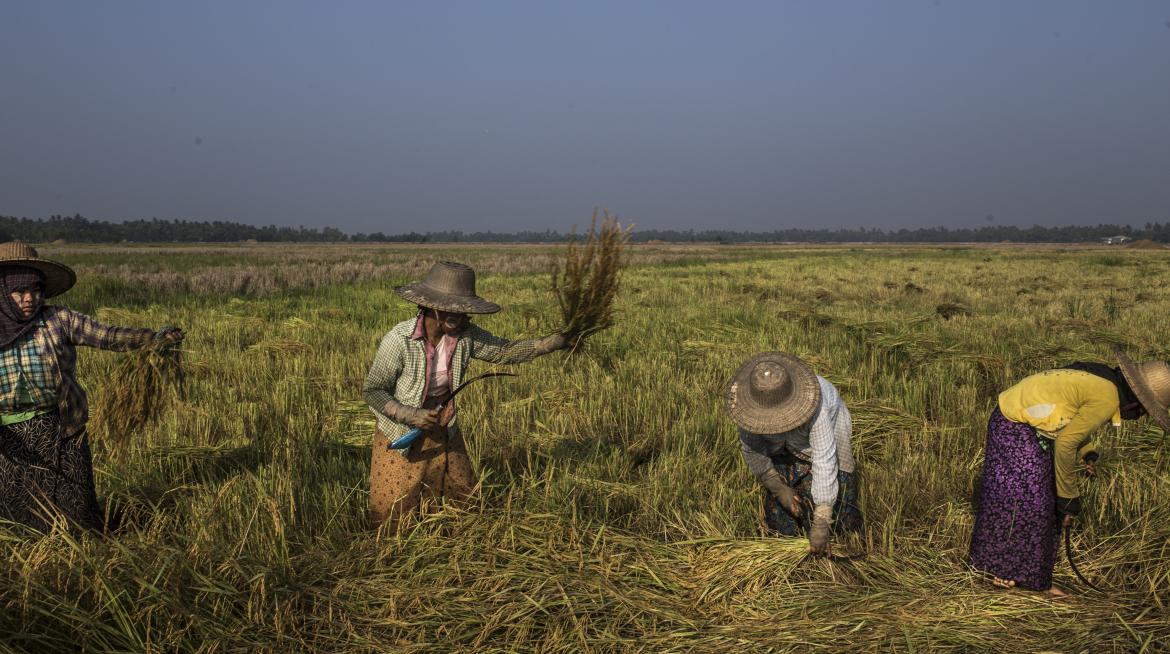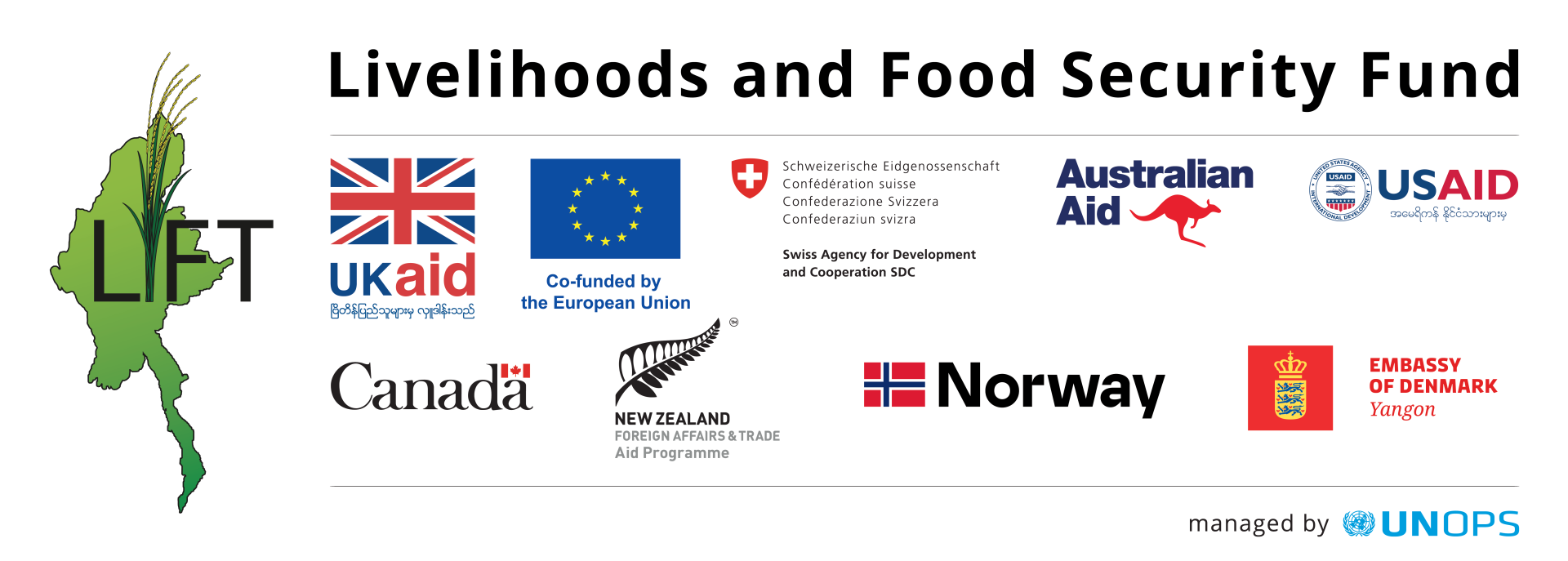
It is harvest time in the fertile Ayeyarwady river basin and the majority of the able-bodied men and women in Phar Late Wa village are busy in the paddy fields. Under the scorching afternoon sun, big sound amplifiers blast loud music out to the fields. The workers dance to the beat as they work. In this low-lying area, they have to act fast to harvest the grains before the lunar tide floods the land. The cost to farmers of harvesting each acre is around MMK 50,000 (USD 42).
For the land-owning farmers who employ them, acquiring sufficient labour at this time can be a challenge. Farmers inform the local village labour committees ahead of time about the number of workers and work days they will need. Workforce is then allocated, based on needs, prioritising the paddy fields that are ready for harvest and those in the low-lying areas that are susceptible to seawater intrusion. This year, farmers report a bigger labour shortage than usual, which they attribute partly to the increase in summer crops cultivation and partly to migration out of villages. In response to this, and with new opportunities to access financial products including hire purchase, the use of harvest machinery is on the up.
The farmers are excited about this year’s yield. In the local teashop where villagers get most of their information, people are talking about the sticky rice price – which has doubled. It is not common for Myanmar people to eat sticky rice, so it is mainly exported to neighbouring countries, like China. Farmers who have harvested their paddy claim this is the best year for the summer paddy crop yield; a result of favourable weather conditions and better farming techniques and practices. In the past, farmers in Phar Late Wa only grew paddy during the rainy monsoon season, but in the last three to four years they have started growing summer paddy as well.

One of the most successful farmers in the village is 59-year-old U Yan Thein, who says that the farmers have benefited enormously from the farming techniques and knowledge gained from Proximity Designs (formerly IDE Myanmar), which started providing farm advisory services after Cyclone Nargis in 2008. With funding from LIFT, Proximity has trained farmers in techniques that increase yields and improve crop health.

The Ayeyarwady region is the rice bowl of Myanmar, yet at the same time, it is highly vulnerable to the impacts of climate change. Water drainage, salt intrusion and flood protection are major concerns. Farmers say that in recent years, rising sea levels have intensified seawater flooding, which increases the soil salinity and lessens monsoon paddy yields. Growing sticky rice as a summer crop has helped Ayeyarwady rice farmers to cope with this problem, as sticky rice plants are more resilient to salt intrusion. The ability to harvest two crops instead of one significantly increases their incomes.
One technique introduced by Proximity to boost yields is the simple but effective Salt-Water Seed Selection technique. This method of soaking rice seeds in a salt-water mixture and selecting those that sink to the bottom for sowing is simple and cost-free, but results in healthier crops and a yield increase reportedly of 10 – 15 per cent.
U Yan Thein, who owns 80 acres of farmland, says Proximity has also taught them how to sow rice seeds systematically at a specific width apart, rather than scatter, or broadcast the seed. Farmers have also learned about the disadvantages of using chemical fertilisers, which speeds up growth but depletes the land in the long run.
U Yan Thein’s first attempt at growing sticky rice four years ago failed after salt water inundated his farm. He travelled to other villages which had been more successful, and adopted the good practices he saw.
“Besides hard work, a farmer must be open to adopt new techniques,” he says.

Hla Win Naing, pictured above, is another advocate for sticky rice, which he started growing three years ago after learning about it from relatives and friends. Before, he farmed 200 ducks, but he often got into trouble when his ducks ate and destroyed his neighbour’s paddy. Using his savings, money from the sale of his ducks and a loan from a private lender he bought three acres of farmland and rented another ten.
His first sticky rice season on only one acre was successful, and last November he scaled up to dedicate five acres of land to sticky rice. He says that the sticky rice summer crop, planted in November, can fetch MMK 950,000 (around USD 778) per 100 baskets, compared to MMK 750,000 (USD 614) for the monsoon paddy crop.
With thanks to the LIFT-funded Livelihoods and Social Change: QSEM Round 6 report team from the World Bank/Enlightened Myanmar Research, who are gathering qualitative information from rural communities at this time. Photography by Minzayar Oo.


